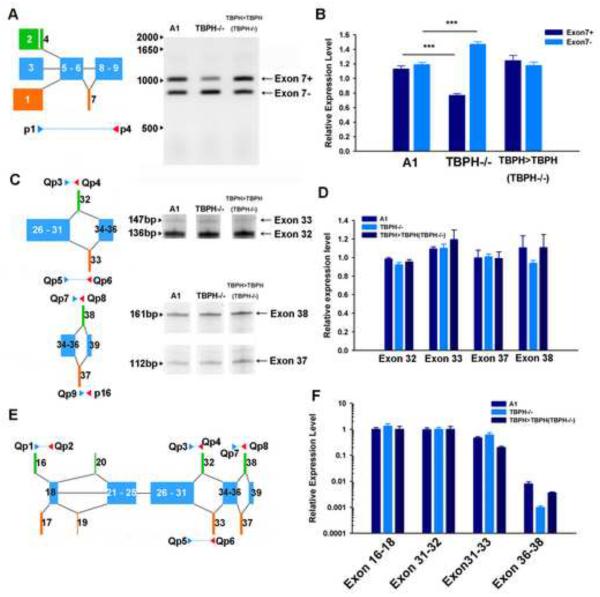Figure 7.
Semi-quantitative and real-time RT-PCR reveal subtle changes in cacophony splicing in TBPH null mutant larvae. A & B. Semi-quantitative RT-PCR shows that loss of TBPH leads to a reduction in inclusion of exon 7. B. Quantification of the intensities of the PCR products shows a significant decrease in the amount of product containing exon 7 (exon7+) and a concomitant increase in the product lacking exon 7 (exon7−) in TBPH mutants, which is reversed in the TBPH rescue animals. The intensity of each band was measured and normalized to the intensity of the band amplified in w1118 control animals. Mean and standard error from four independent samples are shown, *** p<0.001. C & D. Semi-quantitative RT-PCR showed no change in the relative abundance of mutually exclusive alternate exons 32 and 33 and exons 37 and 38. D. Quantification of the relative abundance of these products performed as in B, E & F. Real-time RT-PCR from the CNS of third instar larvae of products covering alternate exons 16, 17, 32, 33 & 38 confirms no effect of TBPH loss on the splicing of these exons. E. Schematic diagram showing positions of primers. F. Relative expression levels of products was quantified using real time RT-PCR and normalized to actin expression levels. Mean and standard error from five independent samples are shown.

